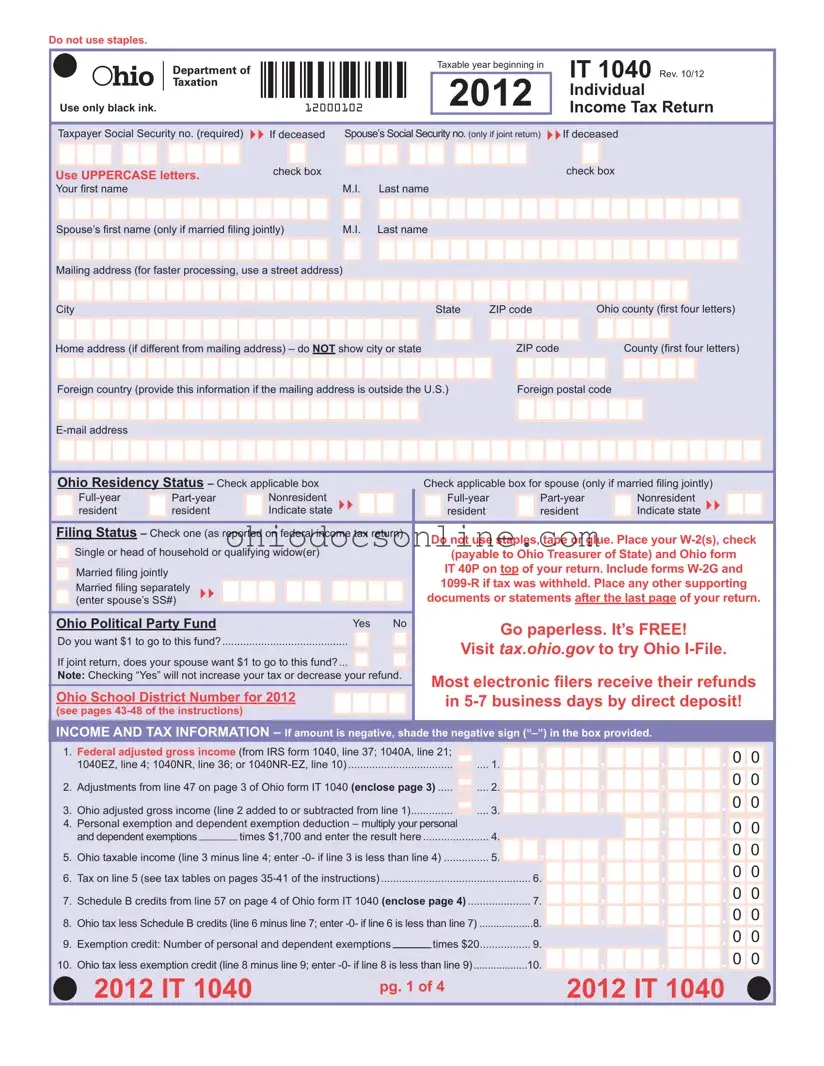It 1040 Ohio Template in PDF
The IT 1040 Ohio form is the state’s individual income tax return that residents must file to report their earnings and calculate their tax obligations. This form is essential for determining how much tax is owed or if a refund is due. Proper completion of the IT 1040 ensures compliance with Ohio tax laws and facilitates efficient processing by the Ohio Department of Taxation.
Open Editor
